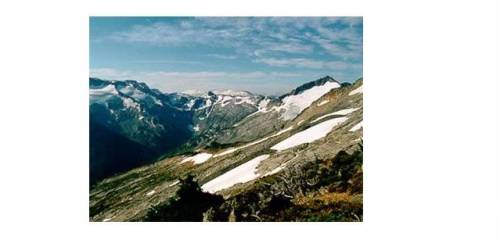
The tundra is cold year-round. it has short cool summers and long, severe winters. The tundra has a permanently frozen sublayer of soil called permafrost. Like the desert, the tundra receives little precipitation, about 4 to 10 inches per year, and what does fall is usually in the form of snow or ice. It has long days during the growing season, sometimes with 24 hours of daylight, and long nights during the winter. Which adaptations would you expect to see in plants growing in the tundra?
A) leaves with hair help shade the plant, reducing water loss.
B) small and grow in clumps for protection from the wind and cold
C) deep roots to help capture nutrients from deep below the surface
D) tall plants with broad, thin, waxy leaves leaves so water easily runs off


Answers: 1


Another question on Biology

Biology, 21.06.2019 14:00
How are cellular respiration and photosynthesis different? cellular respiration assists breathing; photosynthesis aids pigmentation. cellular respiration breaks down glucose; photosynthesis creates glucose. cellular respiration creates glucose; photosynthesis breaks down glucose. cellular respiration releases oxygen; photosynthesis releases carbon dioxide.
Answers: 3

Biology, 21.06.2019 20:00
The phylogeny chart shows the evolution of camels. camelus is the modern-day camel. based on this chart, which three statements are true? ⭕ modern camels are more related to stenomylus than to eschatius. ⭕ stenomylous and modern camels do not share a common ancestor. ⭕ modern camels are more related to camelops than to aepycamelus. ⭕ pliauchenia and oxydactylus may share similar features. ⭕ procamelus and stenomylous may share similar features.
Answers: 2

Biology, 21.06.2019 22:00
Flock x flock y flock z total pieces of food eaten (from previous page) 147 93 60 food percentage* % % % simulated number of birds in flock for 3rd generation** * divide each flock's total pieces of food by 300, the total number of pieces of food eaten. ** multiply the food percentage for each flock by the total number of birds (30).
Answers: 1

Biology, 22.06.2019 05:20
When a human or animal consumes food, the carbon in that food is most likely to be converted into which of the following elements? a. carbon remains carbon b. nitrogen c. oxygen d. hydrogen
Answers: 2
You know the right answer?
The tundra is cold year-round. it has short cool summers and long, severe winters. The tundra has a...
Questions

Chemistry, 18.10.2020 01:01



Chemistry, 18.10.2020 01:01


Mathematics, 18.10.2020 01:01




Mathematics, 18.10.2020 01:01

History, 18.10.2020 01:01


Mathematics, 18.10.2020 01:01




Biology, 18.10.2020 01:01


Chemistry, 18.10.2020 01:01

English, 18.10.2020 01:01



